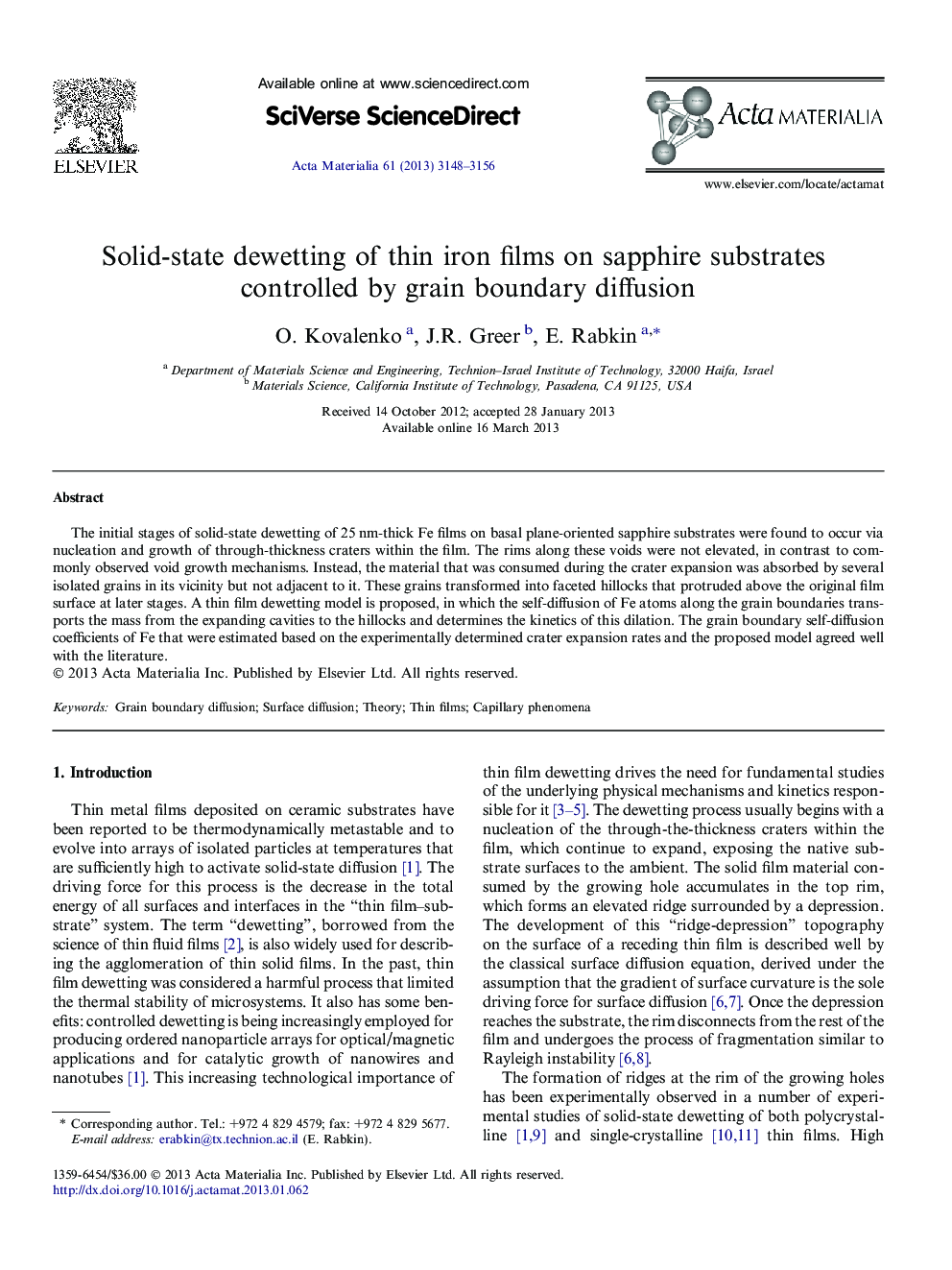| Article ID | Journal | Published Year | Pages | File Type |
|---|---|---|---|---|
| 1446376 | Acta Materialia | 2013 | 9 Pages |
The initial stages of solid-state dewetting of 25 nm-thick Fe films on basal plane-oriented sapphire substrates were found to occur via nucleation and growth of through-thickness craters within the film. The rims along these voids were not elevated, in contrast to commonly observed void growth mechanisms. Instead, the material that was consumed during the crater expansion was absorbed by several isolated grains in its vicinity but not adjacent to it. These grains transformed into faceted hillocks that protruded above the original film surface at later stages. A thin film dewetting model is proposed, in which the self-diffusion of Fe atoms along the grain boundaries transports the mass from the expanding cavities to the hillocks and determines the kinetics of this dilation. The grain boundary self-diffusion coefficients of Fe that were estimated based on the experimentally determined crater expansion rates and the proposed model agreed well with the literature.
Graphical abstractFigure optionsDownload full-size imageDownload high-quality image (84 K)Download as PowerPoint slide
